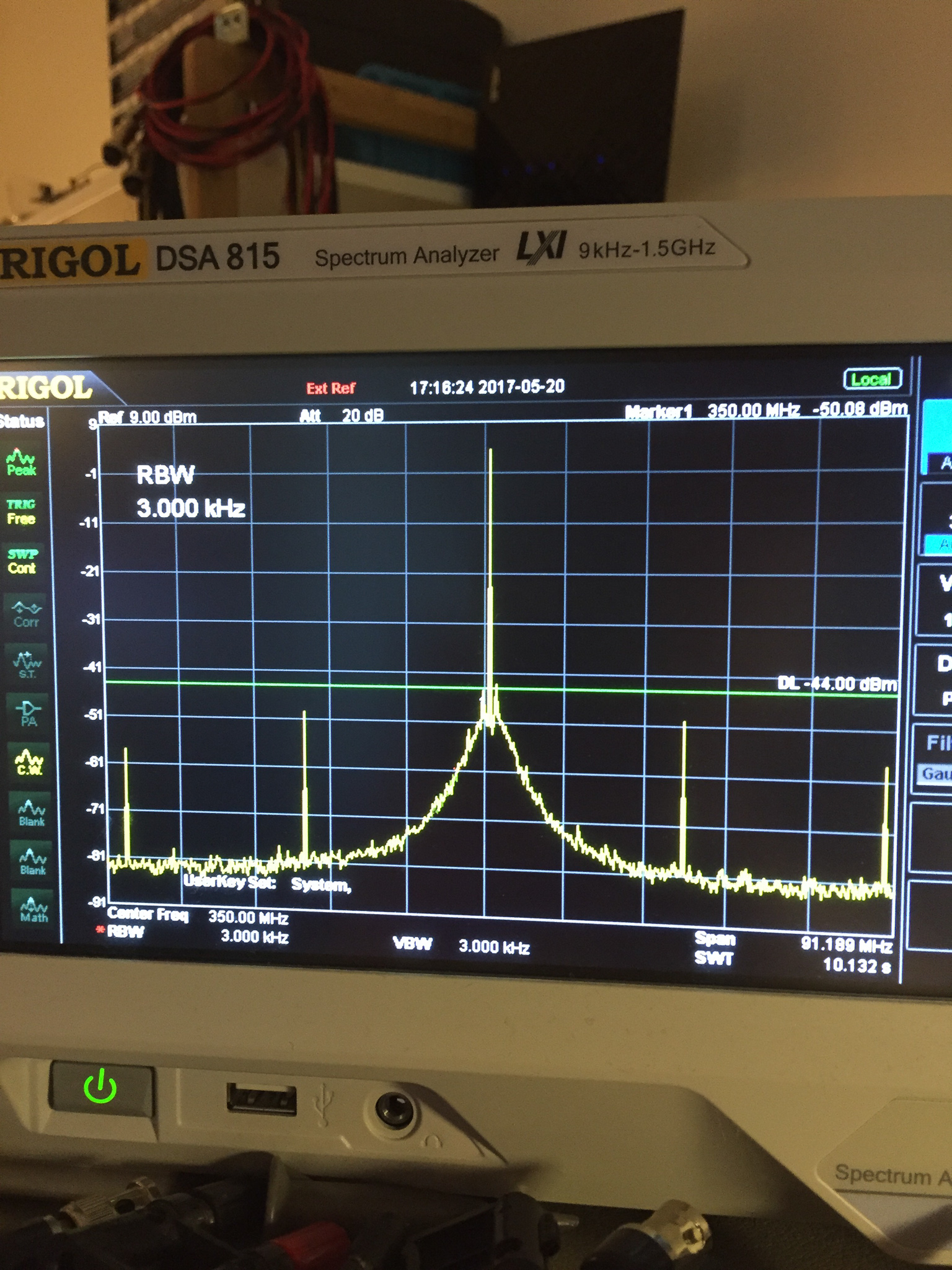CRCD83(A) RAMBUS Clock Generator as a Local Oscillator for Radios

To investigate a simple way of generating local oscillators for my UHF transmitter, the CDCR83 was put on a 4 layer board and fed with frequencies from 10-150 MHz at various multiplication settings. As usual a bag of these was found on eBay and as such there was some incentive to find a use for them.


This board runs off 5-12 V and provides an I2C I/O expander interface to remote control the IC settings including stop/power down. The DIP switch was used for initial testing but can be overridden by I2C.
Performance was very good considering it’s a digital clock type IC. In addition it was found that the PLL locking range of the IC tested was actually between 40-700 MHz despite only being guaranteed for 267-400 MHz.
Note that the additional edge-locking functionality is disabled on this board, normally this would be used to align the clock edges of two RAMBUS clock domains. By grounding these pins this circuitry is disabled and the phase noise performance improves slightly.
Output power as implemented was 0-3 dBm single ended depending on frequency, with a very clean spectrum. It was also noted that narrow band FM would be carried straight through (and multiplied in deviation as expected), this is explicitly supported as the IC supports spread spectrum clocking.

With an appropriate balun the output power will likely be increased slightly. A 1:1 50-50 Ω balun would be best suited as the output impedance of the drivers are around 25 Ω for approx. 50 Ω differential output impedance.
This simplifies the generation of local oscillators for UHF systems, as a simple low frequency VCO like the type used in this project can reliably be multiplied with a minimum of components. The input power must be 8-10 dBm to support proper operation, which is achievable with standard CMOS buffering at these frequencies. The Magnetic VCO board also provides sufficient power to drive this IC.
The low output power is not a significant problem if the output is fed to an active mixer as these typically run between -10 to 0 dBm LO level. For passive mixers a higher power level is usually required and the signals require amplification.
In any case, it is often better to use low level LOs on interconnects and use a local amplifier for local oscillators, to reduce the potential for EMI issues.